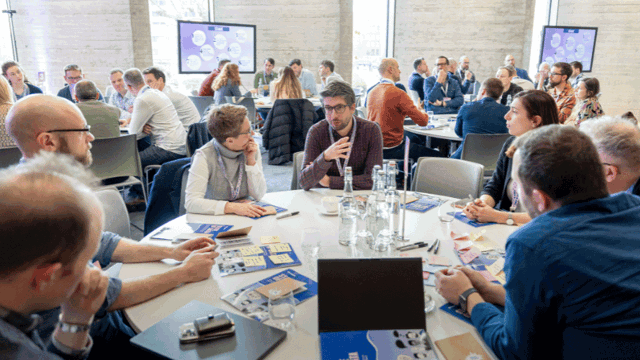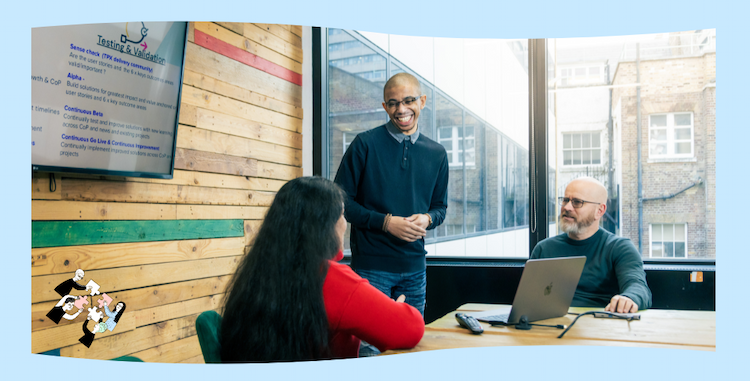When thinking about setting up a new product or service team, the questions that are often asked include: What should the makeup of the team be? What roles and headcount do we need, and at what phase of the process do we need them?
The real answer to these questions is, of course, ‘well it depends’ - which it does. It depends on a multitude of factors, such as what the product is or what team members or skill sets we have available and timelines. However, there are some principles and best practice guidelines we can follow to better understand what our approach could be.
Start with the core
A team will grow and change over time, but the best and most successful teams often have a solid, consistent core. By setting up a group of 2-4 members with skills that the team will need throughout its lifecycle from the start, we can provide that nucleus around which the rest of the team can form. This core will hold the vision and mission of the team and quickly become the experts in what is delivered.
We might not need the entire core to be full-time from the start, but by tapping them early, we set the rest of the team up for success.
In terms of roles, we would want a selection of the following, depending on the nature of our product:
-
a product manager (or someone with a strategic remit)
-
a delivery manager
-
a research/ design lead
-
an engineering lead
There is also a selection of skills that are really important in delivering successful products and services. These might come from or overlap with other team members, and we might not need them all from day one, but it’s useful to keep them in mind to ensure we have accountability for them:
-
security and data protection
-
accessibility
-
search engine optimisation
-
data analysis and analytics
Build skill clusters
With our core established, we can start to think about other skills and capabilities our team might need. Think about these as clusters, people or skills that will be needed at different times. For example, in the early phases of a discovery, user research and service design skills will be vital, and as we move into alpha, beta and beyond, we might need more development resources to start to build something technical to deliver the service. By clustering the skills needed, we can talk more broadly about what could be needed and when - and the team can assess the particular skills needed within that grouping.
Some example skill clusters and the roles within might be:
-
technical (back-end development, front-end development, dev ops)
-
research and needs (business analysts, user research, service design)
-
design (interaction design, UI design, animation)
-
content (content design, content creation)
-
customer Experience (marketing, sales, customer experience, support)
Examples of team development
Now we have identified our core team, and the clusters of skills that might be needed, we can start to map our product phases to identify when we will need to bring these capabilities online within the team. By doing this upfront, we provide ourselves with a framework to operate within, which is often vital for resourcing or budgeting, whilst remaining flexible to adapt to emerging or changing needs.
Discovery
In discovery, the team forms for the first time to research and understand the user need for the proposed service, exploring what other services or solutions exist alongside our this, and starting to think about what prototypes or other experiments we want to explore in the alpha phase. For the discovery, we want to establish our core squad and include skills such as research, design and technology. A sample team might be around 1-4 people in this phase.
Alpha
In alpha, we set about exploring ideas and validating hypotheses. In this phase, our core team will likely become full-time, and we’ll need to add engineering skills alongside research and design. Content support could also be important here. A sample team here might be around 4-8 people.
Beta
As we move to beta, we begin to create a simple, clear and fast service that meets the identified needs as we start to think about moving this to live. Here, the team is at its largest, with support from the customer experience skill cluster coming on board to prepare for our exit out of beta and into a live service. Our team at this stage could be between 6-12 people
Live
Once our service or product goes live, the needs of the team will change the most. Depending on the nature of our service, we might need a team geared towards supporting, onboarding and managing users through our service and keeping it stable, or to focus on continuing to explore, iterate and expand our offering over time. Typically the team would be lean here - between 2-4 people.
Successful teams build successful products and services
Building product and service teams are vital to ensuring a platform is delivered and managed successfully. By setting up our teams well from the beginning and thinking about them as live and evolving parts of our delivery process, we can maximise our effort and return on investment while making sure our solutions benefit everyone.
If you want to discuss more about how TPXimpact can help you run high-functioning teams, please get in touch!

How AI’s reshaping software engineering
AI tools boost dev speed, but not skill. The future is in leading AI with experience, strategy, and thoughtful engineering.
Read moreOur recent insights
Transformation is for everyone. We love sharing our thoughts, approaches, learning and research all gained from the work we do.

Shaping the future of data in government
We share some key takeaways on data sharing, AI, innovation, and transformation across government from our Power of Data roundtables.
Read more
The data-driven future of funding services
Labour’s digital policy shift signals a new era of streamlined, user centred funding services led by data and trust, not bureaucracy.
Read more
Using data to transform public services
Tom Smith, Chief Data Officer and Data Unit Director at MHCLG, discusses overcoming legacy systems, leveraging AI, and why collaboration is key to shaping a data-driven future.
Read more

